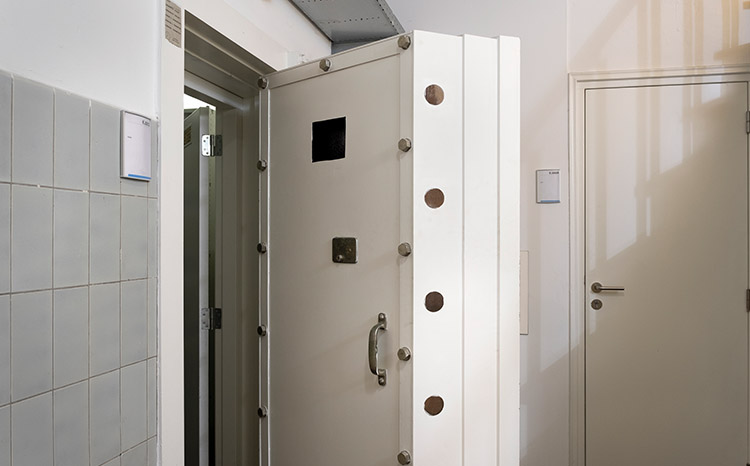Hidden gems: the safes at Tongersestraat 6
Maastricht University takes care of many distinctive buildings and art works that we all know. By giving them a new purpose, we preserve these icons and give them a new meaning, making them the vibrant heart of a bustling city.
Did you know that these buildings and art works also provide access to various special places and stories? Let yourself be surprised and join us in this series exploring the hidden gems of the university and the city of Maastricht.
The Tongersestraat is a street in the centre of Maastricht. From the late Middle Ages until the French Revolution, the street was one of the most prominent in the city. The roughly 350-metre-long street boasts 54 national heritage sites, including the house formerly belonging to the garrison’s commandant (the Commandant’s house) at number 6. Currently, Maastricht University’s Finance department is housed here, but there is a whole history behind it…
In 1725, the city council merged four existing houses on the Tongersestraat to form the Commandant’s house. The Commandant held the highest military position in the fortified city. A plaque at the building’s entrance commemorates this. A carriage gate was added on the right-hand side of the property, so that the residents and their visitors could enter the home dry with their carriage and horse under shelter. When entering via this large gate, the original pavements can still be seen on both sides.
Text continues below the photo.

In 1829, the residence was put to use as an individual home. As from 1956, it belonged to Kredietbank Nederland, until UM purchased the property in 1986. In 2011, the university renovated the property. In the renovation, all sorts of modern, sustainable technology was added, resulting in Tongersestraat 6 being the most sustainable building at UM for years. For example, the herring in water in the plaster of the walls actually heat the building. Woe to anyone who dares to hammer a nail into the wall!
But UM also respects the history of the building. For instance, in the beautifully planted garden, a plinth with a cast-iron cannon ball can be seen. The cannon ball landed in the garden during a siege in 1793, but it did not explode. The cannon ball was removed from the property for many years, but returned to the garden as a gift in 2019. In addition, the safes belonging to the previous owner, Kredietbank Nederland, can still be found in the basement. They are currently used by the Finance department to store paper archive material for the university. See the photos accompanying this article.
(Note: Tapijn 11 has since become the most sustainable building at UM. It has even been awarded the WELL Building Certificate.)
Text: Gido Boere and Evert van Zoeren
Photography: Joris Hilterman
Maastricht University is proud to be the most international university in the Netherlands. We are grateful for the richness and diversity provided by our international staff, students and study programmes—and the ensuing endless supply of inspiring stories. This is one of those stories.
#FromTheRegionForTheRegion.
Do you want to read, watch and listen to more stories? Visit our campaign page.
Also read
-
A new wave of talent emerges from the School of Business and Economics
On Sunday, November 30, 2025, the Maastricht University School of Business and Economics (SBE) proudly celebrated the achievements of over 1,461 graduates from both bachelor’s and master’s programs. The festive ceremony took place at the MECC Maastricht and marked a significant milestone for the SBE
-
Roy Broersma (CEI): Guiding Aestuarium from idea to venture
Roy Broersma, director of the Center for Entrepreneurship & Innovation (CEI) at SBE, has been closely involved in guiding Aestuarium from an early student startup to a growing venture. From spotting their potential during the Brightlands Startup Challenge supporting them through CEI.
-
From Study to Startup: The story behind Famories
When Lennie and Neele graduated, while many of their classmates were busy fine-tuning CVs and stepping into roles at top companies, they took a detour by recording podcasts with their grandmas. What began as a charming way to cherish family memories has blossomed into Famories, a vibrant startup with a...